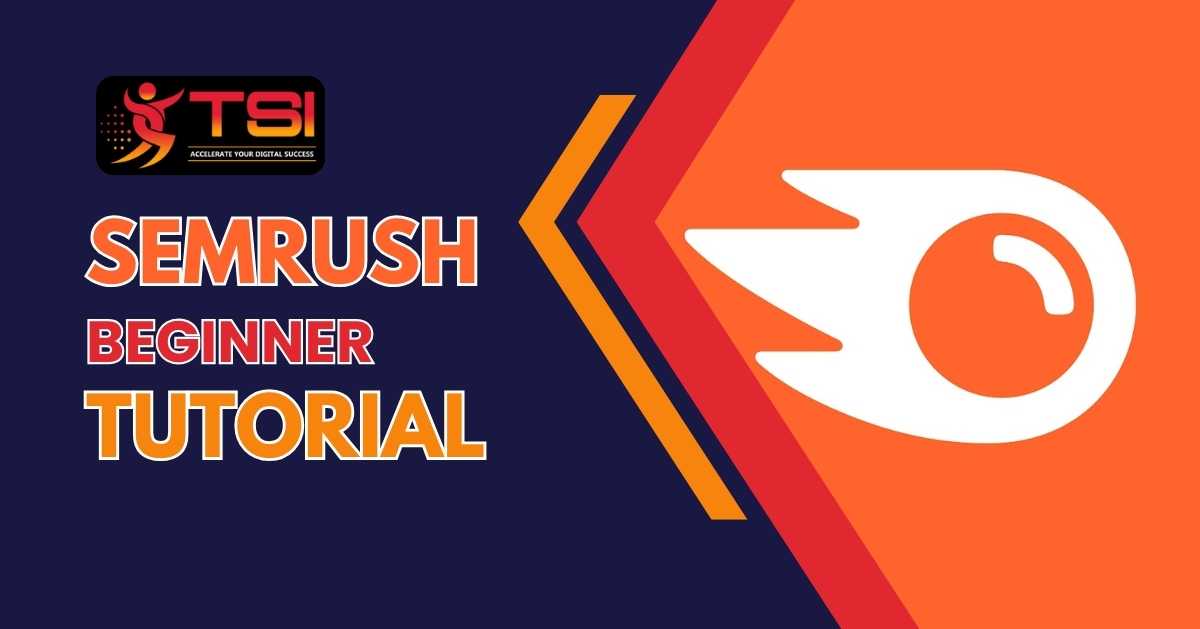In the world of digital marketing, data-driven strategies are the secret weapon for success. Whether you want to rank higher on Google, outsmart competitors, or run more effective ads, you need the right tools. One of the most powerful platforms for this purpose is SEMrush.
If you’re a beginner wondering how to use SEMrush effectively, this guide will walk you step-by-step through its core features, keyword research tools, SEO analysis, and digital marketing benefits.
What is SEMrush?
SEMrush is an all-in-one digital marketing suite that helps you improve your website’s SEO, PPC, content marketing, social media, and competitive research. It offers over 55+ tools for everything from keyword research to backlink analysis and site audits.
With SEMrush, you can:
- Discover profitable keywords.
- Spy on competitors’ strategies.
- Audit your website for SEO errors.
- Track your rankings.
- Analyze backlinks.
- Plan content for better visibility.
Setting Up SEMrush
Before diving into its features, you need an account.
Steps to Get Started:
- Visit SEMrush.com.
- Click Sign Up.
- Create an account using your email or Google login.
- Choose your plan (Free, Pro, Guru, or Business).
- Enter your domain to start your first project.
Tip: The free plan gives limited searches per day, but enough to explore SEMrush’s capabilities before upgrading.
SEMrush Dashboard Overview
When you log in, you’ll see the dashboard, your command center for all projects and tools.
Main Sections You’ll Use:
- Projects: Manage your websites and campaigns.
- Keyword Analytics: Find and analyze keywords.
- Domain Analytics: Research competitors’ websites.
- Backlink Analytics: View your link profile.
- Content Marketing Toolkit: Plan and optimize content.
- Advertising Toolkit: Research paid ad strategies.
How to Use SEMrush for Digital Marketing
SEMrush isn’t just for SEO—it covers multiple areas of digital marketing.
a) Competitor Analysis
- Go to Domain Overview.
- Enter your competitor’s domain.
- See their organic keywords, traffic, top pages, and paid ads.
- Identify gaps you can target.
b) Social Media Marketing
- Use the Social Media Tracker to monitor competitors’ social channels.
- Schedule and post updates with Social Media Poster.
- Analyze engagement and follower growth.
c) PPC Campaigns
- Use Advertising Research to see what keywords competitors bid on.
- Check their ad copies to improve your own campaigns.
How to Use SEMrush for SEO
a) Site Audit
The Site Audit tool scans your site for technical SEO issues.
- Go to Projects → Add a New Project.
- Click Site Audit.
- Configure crawl settings and run the audit.
- Get a report on:
- Crawl errors
- Broken links
- Duplicate content
- HTTPS issues
- Fix errors to boost rankings.
b) Position Tracking
Track your keyword rankings across search engines.
- Go to Position Tracking in your project.
- Add target keywords.
- Select location & device type.
- Monitor ranking changes daily.
c) On-Page SEO Checker
Gives actionable recommendations to improve specific pages.
- Enter a URL and target keyword.
- SEMrush suggests title tag changes, content length, and backlink opportunities.
Keyword Research with SEMrush
Keyword research is the backbone of SEO and PPC campaigns.
a) Keyword Overview
- Go to Keyword Overview.
- Enter a keyword.
- View:
- Search volume
- Keyword difficulty
- CPC (Cost per Click)
- SERP features (Featured snippets, People Also Ask, etc.)
b) Keyword Magic Tool
- Enter a seed keyword.
- Discover thousands of related keywords.
- Filter by:
- Search intent (Informational, Commercial, Transactional)
- Search volume
- Keyword difficulty
- CPC
💡 Example: Enter “digital marketing” and find variations like “digital marketing courses,” “digital marketing services,” etc.
c) Competitor Keyword Gap
- Go to Keyword Gap tool.
- Compare your domain with up to 4 competitors.
- See keywords they rank for that you don’t.
Content Marketing with SEMrush
Strong content builds trust and drives traffic.
a) Topic Research
- Enter a topic keyword.
- Get content ideas, headlines, and questions people are asking.
- Identify trending subtopics.
b) SEO Content Template
- Enter your target keyword.
- SEMrush suggests:
- Word count
- Keywords to include
- Competitor content references
c) Content Audit
- Analyze existing pages.
- Find outdated or low-performing content to refresh.
Backlink Analysis
Backlinks are a major Google ranking factor.
a) Backlink Analytics
- Enter your domain or competitor’s domain.
- See:
- Number of backlinks
- Referring domains
- Link types (text, image, form)
- Authority scores
b) Backlink Gap
- Compare your link profile with competitors.
- Identify sites linking to them but not you.
c) Link Building Tool
- Get outreach targets.
- Track link-building campaigns inside SEMrush.
SEMrush for Local SEO
If you target local customers:
- Use Position Tracking with location filters.
- Check Local Pack rankings.
- Manage your Google Business Profile integration.
SEMrush Reports & Tracking
You can create automated reports:
- Go to My Reports.
- Choose templates (SEO, PPC, Competitor Analysis).
- Schedule weekly or monthly email delivery.
SEMrush Pricing
As of now, SEMrush offers:
- Free Plan – Limited access
- Pro – For freelancers & small teams
- Guru – For growing agencies
- Business – For large enterprises
Tips for Beginners
- Start with a Free Plan to explore tools.
- Focus on one goal at a time (SEO, PPC, content).
- Use Keyword Magic Tool daily for fresh ideas.
- Run weekly site audits.
- Track competitors to stay ahead.
Conclusion
SEMrush is more than just an SEO tool—it’s a complete digital marketing powerhouse. From keyword research and competitor analysis to content planning and backlink building, it gives you everything you need to grow online visibility and traffic.By following this beginner tutorial, you can unlock SEMrush’s full potential and start building a data-driven marketing strategy that delivers real results.

